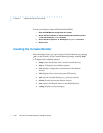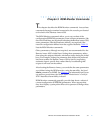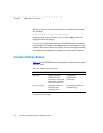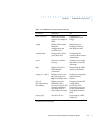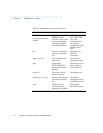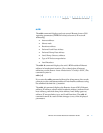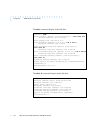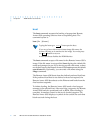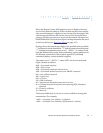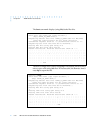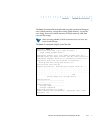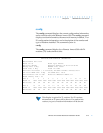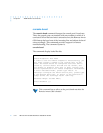
3-7Remote Annex 6300 Hardware Installation Guide
Chapter 3 ROM Monitor Commands
The Remote Annex 6300 must have an Internet (IP) address in its
memory before it can load its operational image across the Ethernet
via the IP protocol. Therefore, you must enter the IP address before
booting the Remote Annex 6300 from a UNIX load host. If you do not
define a subnet mask, the Remote Annex 6300 uses the generic mask
for the specified IP address.
The Remote Annex 6300 tries to boot from a preferred UNIX load
host. If you do not define a preferred load host, the Remote Annex
6300 broadcasts its load request and loads software from the first host
that responds.
If the part of the IP address containing the network address differs
from that of the preferred load or dump host, the host must be reached
through a gateway. The addr command prompts you for this
gateway’s IP address.
The Remote Annex 6300 uses the broadcast address parameter when
loading a file. If this parameter contains a specific address (for
example, 132.245.6.255), the Remote Annex 6300 uses only that
address for broadcast. If the value is all zeroes (0.0.0.0), the ROM
Monitor tries various combinations of broadcast addresses and
subnet or network broadcasts. The Remote Annex 6300 broadcasts its
request three times for each possible combination of broadcast
addresses.
You can specify the IP encapsulation type as either ethernet for
Ethernet, or ieee802 for IEEE 802.2/802.3. The default IP
encapsulation is ethernet. Many systems have hardware Ethernet
interfaces that are IEEE 802.3 compliant, but very few actually do
802.3 IP packet encapsulation.
Do not change this parameter unless you know absolutely that
your Ethernet does 802.2/802.3 IP packet encapsulation. An
incorrect IP encapsulation type prevents your Remote Annex
from booting.




